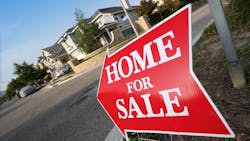Active Inventory Continues to Improve, But Not in Every Market
Since the national pandemic housing boom cooled off in 2022, buyers gradually have been gaining the upper hand. On a national scale, the number of homes for sale is still about 11% lower than in July 2019, before the pandemic, but this figure is improving, according to the ResiClub blog. Between July 2024 and July 2025, active listings nationwide jumped by 25%. To put that in perspective, there were 1.23 million active listings in July 2019, and by July 2022, as the pandemic boom tapered off, inventory had dropped to 691,652 listings. More recently as of July 2025, listings have climbed back up to 1.1 million.
However, the shifting power dynamic from sellers to buyers hasn’t been uniform everywhere. Currently there are just 12 states where active inventory is back above pre-pandemic levels. As of July 2025, these states include: Arizona, Colorado, Florida, Idaho, Hawaii, Nebraska, Oklahoma, Oregon, Tennessee, Texas, Utah, and Washington.
As ResiClub has been documenting, both active resale and new homes for sale remain the most limited across huge swaths of the Midwest and Northeast. That’s where home sellers this spring had, relatively speaking, more power.
In contrast, active housing inventory for sale has neared or surpassed pre-pandemic 2019 levels in many parts of the Sun Belt and Mountain West, including metro area housing markets such as Punta Gorda and Austin. Many of these areas saw major price surges during the Pandemic Housing Boom, with home prices getting stretched compared to local incomes. As pandemic-driven domestic migration slowed and mortgage rates rose, markets like Tampa and Austin faced challenges, relying on local income levels to support frothy home prices. This softening trend was accelerated further by an abundance of new home supply in the Sun Belt.
Builders are often willing to lower prices or offer affordability incentives (if they have the margins to do so) to maintain sales in a shifted market, which also has a cooling effect on the resale market: Some buyers, who would have previously considered existing homes, are now opting for new homes with more favorable deals. That puts additional upward pressure on resale inventory.
